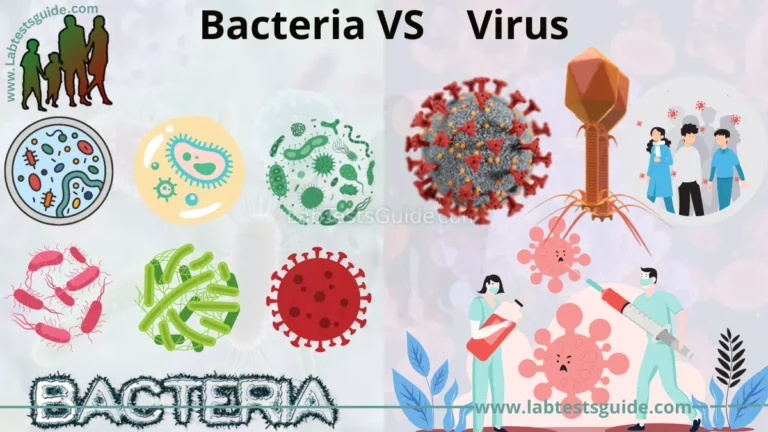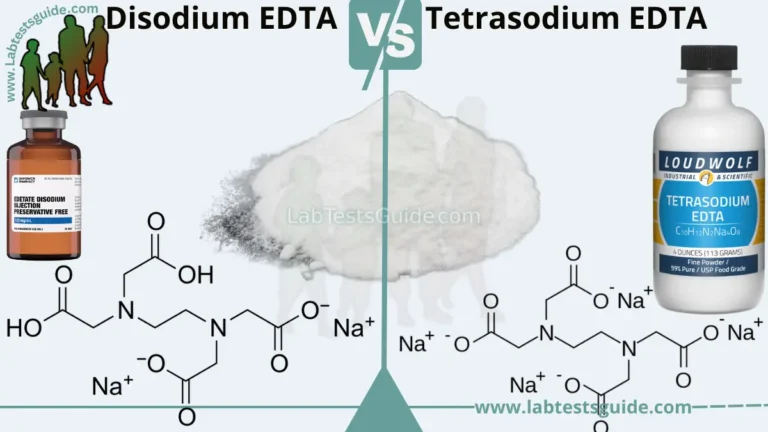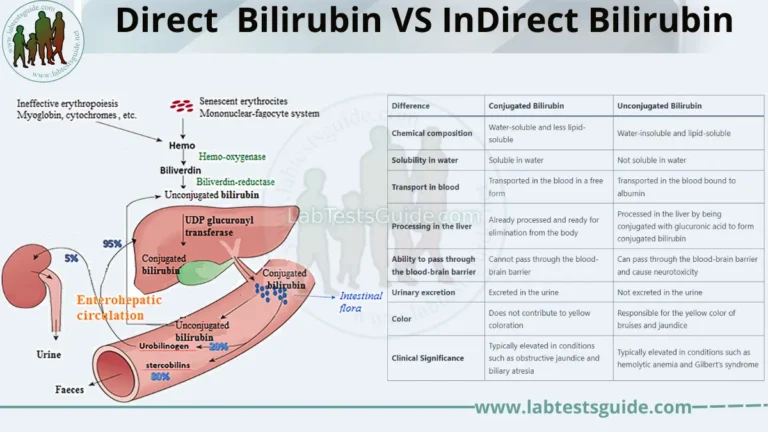Prokaryotes vs eukaryotes: These are two distinct types of cellular organisms. Despite their differences, they also share some similarities between Prokaryotes and Eukaryotes. The differences between prokaryotes and eukaryotes extend to size, reproduction methods, genetic organization, and evolutionary history, highlighting the diversity of life on Earth.
- Prokaryotes are single-celled organisms that lack a true nucleus and membrane-bound organelles, including bacteria and archaea.
- Eukaryotes are Multicellular organisms that have a true nucleus and membrane-bound organelles, including plants, animals, fungi, and protists.

Definations:
Definition of Prokaryotes:
Prokaryotes are a category of cellular organisms that lack a true nucleus and membrane-bound organelles. They are characterized by their simple cell structure, with their genetic material, typically a circular DNA molecule, located in the cytoplasm. Prokaryotes include bacteria and archaea, and they are considered the earliest forms of life on Earth. Despite their simplicity, prokaryotes exhibit remarkable adaptability and can be found in diverse environments, playing essential roles in various ecological processes.
Definition of Eukaryotes:
Eukaryotes are a category of cellular organisms that have a true nucleus and membrane-bound organelles. They are characterized by their complex cell structure, with their genetic material organized into linear chromosomes within the nucleus. Eukaryotes encompass a wide range of organisms, including plants, animals, fungi, and protists. Their cells contain various membrane-bound organelles, such as mitochondria and endoplasmic reticulum, which perform specialized functions.
Examples:
Here is a list of examples for both prokaryotes and eukaryotes:
Prokaryotes:
- Bacteria: Examples include Escherichia coli (E. coli), Bacillus subtilis, Streptococcus pyogenes, and Mycobacterium tuberculosis.
- Archaea: Examples include Methanogens, Halophiles, and Thermophiles.
Eukaryotes:
- Plants: Examples include Oak trees (Quercus), Sunflowers (Helianthus), Wheat (Triticum aestivum), and Roses (Rosa).
- Animals: Examples include Humans (Homo sapiens), Dogs (Canis lupus familiaris), Cats (Felis catus), and Birds (Aves).
- Fungi: Examples include Mushrooms (Agaricus bisporus), Yeasts (Saccharomyces cerevisiae), Molds (Penicillium), and Truffles (Tuber spp.).
- Protists: Examples include Amoeba (Amoeba proteus), Paramecium (Paramecium caudatum), Euglena (Euglena gracilis), and Diatoms (Diatomeae).
Structural Organization:
Prokaryotic Cell Structure:
Prokaryotic cells are relatively simple in structure. They lack a true nucleus and membrane-bound organelles. The genetic material, typically a single circular DNA molecule, is present in the cytoplasm. The cell is enclosed by a cell membrane and often has a rigid cell wall outside the membrane, providing structural support. Some prokaryotes have additional structures like pili for attachment or flagella for movement.
Eukaryotic Cell Structure:
Eukaryotic cells are more complex in structure. They have a distinct nucleus that houses linear DNA molecules. The nucleus is separated from the cytoplasm by a nuclear envelope. Eukaryotic cells contain various membrane-bound organelles, each with specific functions. These organelles include mitochondria for energy production, endoplasmic reticulum for protein synthesis, Golgi apparatus for protein modification and transport, lysosomes for intracellular digestion, and vacuoles for storage. Eukaryotic cells also have a cytoskeleton, a network of protein filaments, providing structural support and enabling cellular movement.
Similarities Between Prokaryotes and Eukaryotes:
Here are 15 similarities between prokaryotes and eukaryotes:
- Genetic Material: Both prokaryotes and eukaryotes store their genetic information in the form of DNA.
- DNA Replication: Both prokaryotes and eukaryotes replicate their DNA using similar enzymatic processes.
- Transcription: Both prokaryotes and eukaryotes transcribe DNA into RNA molecules.
- Translation: Both prokaryotes and eukaryotes translate RNA into proteins using the same genetic code.
- ATP as Energy Currency: Both prokaryotes and eukaryotes utilize adenosine triphosphate (ATP) as the primary energy currency within cells.
- Metabolism: Both prokaryotes and eukaryotes carry out fundamental metabolic processes, such as glycolysis and the citric acid cycle, to generate energy.
- Cell Membrane: Both prokaryotes and eukaryotes have a cell membrane that acts as a barrier, regulating the movement of substances into and out of the cell.
- Cytoplasm: Both prokaryotes and eukaryotes have a cytoplasm where various cellular processes take place.
- Ribosomes: Both prokaryotes and eukaryotes possess ribosomes, which are responsible for protein synthesis.
- Cellular Respiration: Both prokaryotes and eukaryotes can perform cellular respiration to convert organic molecules into usable energy in the form of ATP.
- Signal Transduction: Both prokaryotes and eukaryotes have mechanisms for sensing and responding to external signals or changes in their environment.
- Homeostasis: Both prokaryotes and eukaryotes maintain internal stability and balance through various regulatory mechanisms.
- Cytoskeleton: Both prokaryotes and eukaryotes have a cytoskeleton that provides structural support and aids in cell movement.
- Membrane Transport: Both prokaryotes and eukaryotes have transport mechanisms for moving molecules across the cell membrane.
- Cell Division: Both prokaryotes and eukaryotes replicate and divide their cells to reproduce and grow, although the specific mechanisms differ.
Table of Similarities:
| Feature | Prokaryotes | Eukaryotes |
|---|---|---|
| Genetic Material | Store genetic information in DNA | Store genetic information in DNA |
| DNA Replication | Replicate DNA using similar enzymatic processes | Replicate DNA using similar enzymatic processes |
| Transcription | Transcribe DNA into RNA molecules | Transcribe DNA into RNA molecules |
| Translation | Translate RNA into proteins using the same genetic code | Translate RNA into proteins using the same genetic code |
| ATP as Energy Currency | Utilize ATP as primary energy currency | Utilize ATP as primary energy currency |
| Metabolism | Carry out fundamental metabolic processes | Carry out fundamental metabolic processes |
| Cell Membrane | Have a cell membrane as a barrier | Have a cell membrane as a barrier |
| Cytoplasm | Contain cytoplasm where cellular processes occur | Contain cytoplasm where cellular processes occur |
| Ribosomes | Possess ribosomes for protein synthesis | Possess ribosomes for protein synthesis |
| Cellular Respiration | Perform cellular respiration to generate energy | Perform cellular respiration to generate energy |
| Signal Transduction | Have mechanisms for sensing and responding to external signals | Have mechanisms for sensing and responding to external signals |
| Homeostasis | Maintain internal stability and balance | Maintain internal stability and balance |
| Cytoskeleton | Have a cytoskeleton for structural support and cell movement | Have a cytoskeleton for structural support and cell movement |
| Membrane Transport | Possess transport mechanisms for moving molecules across the cell membrane | Possess transport mechanisms for moving molecules across the cell membrane |
| Cell Division | Replicate and divide cells for reproduction and growth | Replicate and divide cells for reproduction and growth |
FAQs:
Do prokaryotes and eukaryotes have genetic material?
Yes, both prokaryotes and eukaryotes possess genetic material in the form of DNA.
How is protein synthesis carried out in prokaryotes and eukaryotes?
Both prokaryotes and eukaryotes utilize ribosomes for protein synthesis.
Do prokaryotes and eukaryotes have cell membranes?
Yes, both prokaryotes and eukaryotes have cell membranes that surround and protect their cells.
Can prokaryotes and eukaryotes reproduce?
Yes, both prokaryotes and eukaryotes have mechanisms for reproduction, although the processes differ between them.
Are prokaryotes and eukaryotes capable of metabolism?
Yes, both prokaryotes and eukaryotes have metabolic processes that allow them to obtain and utilize energy.
Do prokaryotes and eukaryotes exhibit cell division?
Yes, both prokaryotes and eukaryotes undergo cell division as part of their life cycles.
Can prokaryotes and eukaryotes respond to their environment?
Yes, both prokaryotes and eukaryotes possess mechanisms to respond to stimuli in their environment.
Can prokaryotes and eukaryotes have flagella?
Yes, both prokaryotes and eukaryotes can have flagella, which are whip-like structures used for movement.
Are prokaryotes and eukaryotes considered living organisms?
Yes, both prokaryotes and eukaryotes are classified as living organisms, as they display the essential characteristics of life.
Possible References Used







